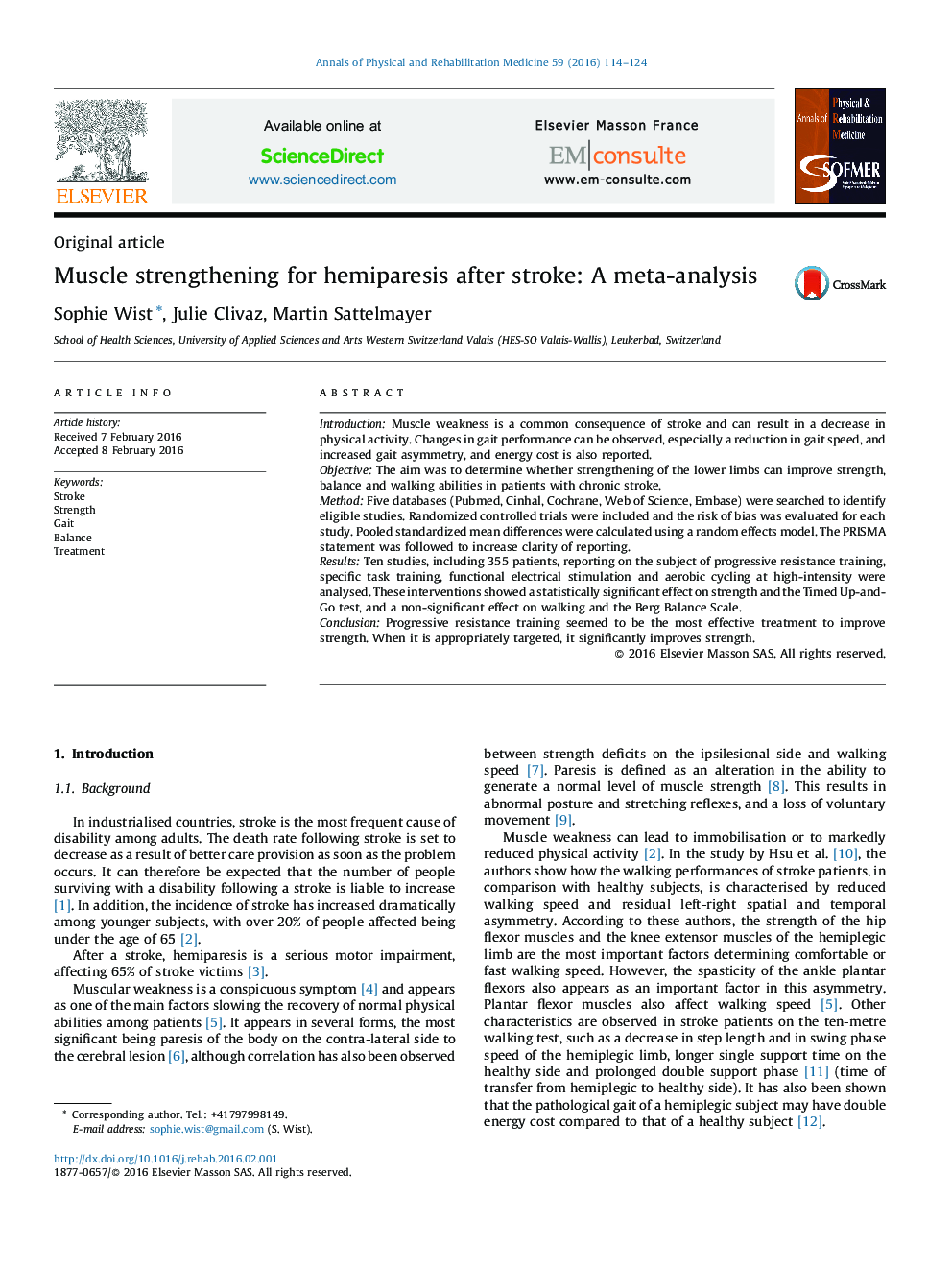| Article ID | Journal | Published Year | Pages | File Type |
|---|---|---|---|---|
| 6204014 | Annals of Physical and Rehabilitation Medicine | 2016 | 11 Pages |
IntroductionMuscle weakness is a common consequence of stroke and can result in a decrease in physical activity. Changes in gait performance can be observed, especially a reduction in gait speed, and increased gait asymmetry, and energy cost is also reported.ObjectiveThe aim was to determine whether strengthening of the lower limbs can improve strength, balance and walking abilities in patients with chronic stroke.MethodFive databases (Pubmed, Cinhal, Cochrane, Web of Science, Embase) were searched to identify eligible studies. Randomized controlled trials were included and the risk of bias was evaluated for each study. Pooled standardized mean differences were calculated using a random effects model. The PRISMA statement was followed to increase clarity of reporting.ResultsTen studies, including 355 patients, reporting on the subject of progressive resistance training, specific task training, functional electrical stimulation and aerobic cycling at high-intensity were analysed. These interventions showed a statistically significant effect on strength and the Timed Up-and-Go test, and a non-significant effect on walking and the Berg Balance Scale.ConclusionProgressive resistance training seemed to be the most effective treatment to improve strength. When it is appropriately targeted, it significantly improves strength.
